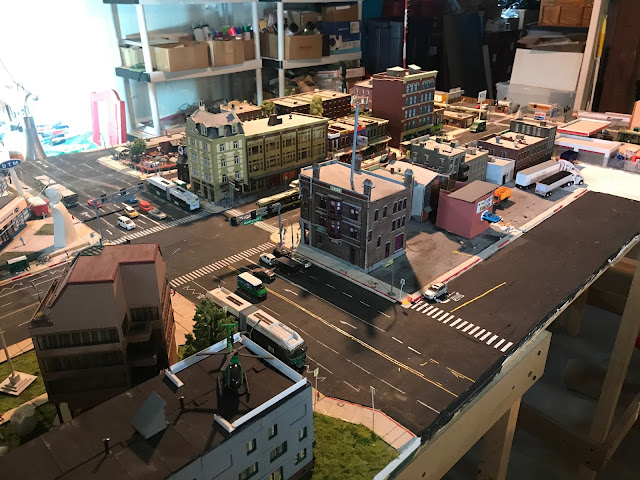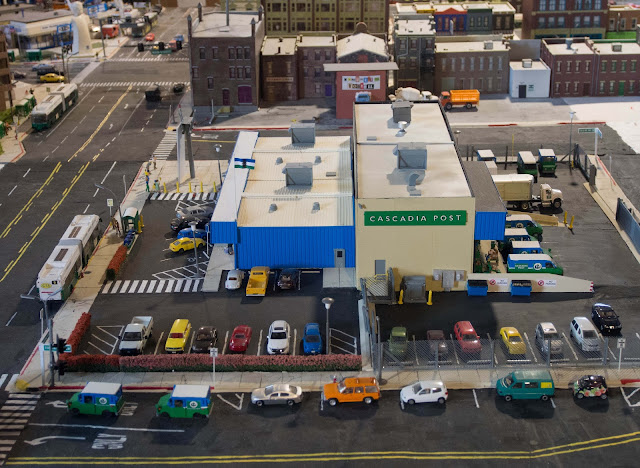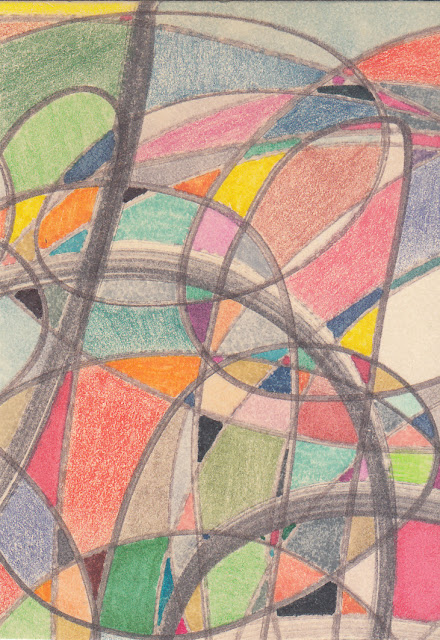Mail Art News #45: An Overview of Cascadia Artpost
Between 2008 and 2014, I posted entries on a blog, “Welcome to Cascadia Artpost” (two versions), which provide some background on the first years of Cascadia Artpost. I discontinued the posts in 2014 because they were taking too much of my time, even though I had retired from professional work (public transportation) a couple of years before.
My interest in mail art correspondence really began in 2002, when I started using the name “Cascadia Artpost”. I documented this early time in 2008 with the post “First Day of Issue”:
_____________________________________________
Welcome to the blogsite of Cascadia Artpost. Cascadia Artpost represents the formalization of a personal postal art expression for the northwestern part of the United States and larger region that is my home. In view from Seattle, Washington, at times when the clouds lift is the Cascade Mountain range, extending from the Canadian province of British Columbia to the U.S. state of California. If you are within sight of these beautiful mountains, you can consider yourself in the region of Cascadia. Cascadia is the part of the world I mentally and physically inhabit.
When I was a teenager, I collected postage stamps, and twenty years ago acquired a book on the watercolor artistamps of Donald Evans. However, my own interest in designing artistamps and mail-art began in November 2001, when I was organizing a set of photos from a visit to Latvia and accidentally downsized an image on the computer. The panorama from the 27th floor of Hotel Latvia became an intriguing stamp-sized image. I printed a copy of the image on an inkjet printer. I decided to create a faux Latvian set of stamps to decorate the outside of a surprise birthday package for one of my co-workers.
The result was so well received that I decided to keep experimenting with photos and graphic designs in a stamp format. An internet search introduced me to the term "artistamp," and what has been called "the eternal network" of mail artists. Making artistamps was for me an excellent way to synthesize my personal interests in photography, art and graphic design.
Initially I simply used "Cascadia" or "Cascadiapost" in the corner of stamps I created. In August 2002 I chose the name "Cascadia Artpost" and in January 2003 recorded this name as a member of AML, the Artistamp Mailing List, a loose association of mail artists in the U.S. and Canada.
How have artistamps made a difference in my life? Just like any artistic expression, artistamps reinforce personal self-identity by sharing a vision and ideas with others. I value the contacts and the content of postal exchanges over the years, and especially meeting a few of my correspondents in person. The interplay of postal services and the internet have created an opportunity for a network of global democratic expression among at least those who can afford either postage or have access to a computer connection. It is my fervent hope and prayer that our exchanges can also create occasions that help give voice to the visions and ideas of those who are unable, for various reasons, to contribute to the network.
I'll close with a quote taken from an essay on memory written by an acquaintance in the United Kingdom:
"The fight for a sense of self-identity becomes a fight to make personal memory have a place in the wider social consciousness."
For a long time I’ve taken photographs. In a previous life, I worked in graphic arts in the 1970’s and dabbled in graphic design, offset printing, watercolors, and pen-and-ink drawing. Mail art seemed an opportunity to integrate all of these interests. I liked the challenge of designing in a very small format like a stamp, and read about stamp design. The democratic, sometimes subversive, non-commercial framework of mail art was a strong attraction for me.
The Cascadia Diorama is a representation of a near-future small city in the Cascadian Bioregion, executed in a miniature 1:87 scale, intended to serve as the setting for three-dimensional stories with socio-economic, political, and artistic themes. These themes would be represented in mail art by artistamps, postcards, and occasional zines. Populated by miniature residents called “peeps”, the Cascadia Diorama began to take shape in 2014 and remains an ongoing project, documented in mail art.
In June 2019, a City Hall Campus opened across from Dada Trumph Motors, thereby completing the last construction on the original two panels of the diorama. During the rest of 2019, I developed a plan for expanding the diorama to double its size, acquired three building kits to combine for the Central Post Office whose layout was roughly patterned after the Olympia Post Office in downtown Olympia, and fabricated the additional panel to double the size of Cascadia city.
In parallel with the construction of the post office, I completed the “Worker-Owned, Worker Managed” Grain Terminal in spring 2020, served by single-track railroad spur and featuring two grain hopper cars in rainbow colors plus a switcher engine of the Cascadia National Railway, a publicly owned entity. The Grain Terminal will be the subject of documentation in a Diorama Diaries zine later in 2023.
- “Ticket! Ticket!” – A collaborative, ongoing project since 2017 in which correspondents send tickets and other ephemera of daily life, originals or modified, which are then turned into sheets of artistamp images and subsequently sent out to each participant whose contribution appears on a sheet.
- “American Values” – A broad umbrella category for projects such as artistamps of current American Oligarchs (mostly billionaires) and the follies of attempts to preserve American hegemony in the world.
- “Diorama Diaries” – Occasional zines and postcards illustrating scenes and narratives of the Cascadia Diorama.
- “Dada Trumph Motors” – An ongoing venue within the diorama (since 2017) to comment upon and satirize U.S. political life, in the form of artistamps, postcards, and occasional zines.
- Spontaneous projects that might originate in something I’ve read about or photographed; example: a discarded envelope “cancelled” by a tire tread that I saw on the shoulder of a local street during a walk, that later became a postcard titled “Cancelled Mail”.
- 1 tub for the coming year’s mail;
- 2 tubs for what I arbitrarily decided were exceptional creations of various types, and a sentimental category of everything produced by a few long-time correspondents, a few of whom have passed; and
- 2 tubs of the previous two calendar years’ accumulation of mail art, unsorted.
- Darlene Altschul (CA)
- C.T. Chew (WA)
- Robbie Rudine aka Dogfish/Tui Tui (WA)
- Steve Smith (FL)
- Jennie Hinchcliff (CA)
- Sally Wassink (CA)
- DA Ward (TX)
- Ficus Strangulensis (WV)
- Test Tower (WA – passed)
- Adam Roussopoulos (MN)
- Carol Stetser (AZ)
- Sticker Dude aka Joel Cohen (NY)
- RCBz (MN)
- Anna Banana (BC CANADA)
- Jas Felter (BC CANADA)
- Ed Varney (BC CANADA)
- Mailarta (BC CANADA)
- Theo Nelson (AB CANADA)
- Orlando Nelson Pacheco Acuña (CHILE)
- Clemente Padín (URUGUAY)
- Samuel Montalvetti (ARGENTINA)
- Fernando García Delgado (ARGENTINA)
- María Inés Esteves (ARGENTINA)
- Alan Turner (UK)
- Mail Art Martha aka Martha Aitchison (UK)
- Bubblegum Dada Corporation (UK)
- Alan Brignull aka Adanaland (UK)
- Jürgen Olbrich (GERMANY)
- Patrizia Cacciaguerra aka TIC TAC (GERMANY)
- Frips (BELGIUM)
- Vittore Baroni (ITALY)
- Roberto Formigoni (ITALY)
- Henry Denander (SWEDEN)
- Maria Nekrasova (RUSSIA)
- Alexander Limarev (RUSSIA)
- Fraenz Frisch (LUXEMBOURG)
- Peter Kaufmann (SWITZERLAND – passed)
- RYOSUKE COHEN (JAPAN)
- Vizma Bruns (AUSTRALIA)
- More mail art with socio-political themes
- More satire
- More postal oddities
- More artistamps!
USPS postal rates went up again. Blah blah. What are ya gonna do? Can you see the price of one Forever Stamp going up to $1.00? I can. Keep on Mailing. I mailed some chair illustrations from an architectural reference book to Joey Patrickt. I ***might*** re-start my MidJourney AI account for a little while, so I can make some AI generated images of mail art, including people sending and receiving mail art...maybe some AI artistamps. Could be good! Also, getting some envelopes ready to go out.
 |
| outgoing envelope art by T. Brown |
 |
| outgoing works by Monster A Go-Go (above and below) |
 |
| Donald Evans |














































Now I want to give artist stamps another try. I made some years ago, but didn't like how they turned out and gave up. I think I'll give it another try. Thank you for the motivation!
ReplyDeleteI will probably make some this November / December. I added that one perforator from etsy to my list so hopefully Santa or the birthday elves get it for me. If not I am going to have to get it myself. Let me know how your artistamps turn out if you decide to make them. Sarah Roe and Diana Hale both have access to perforator machines if you want to contact them.
DeleteI made $2.70 through my investment in forever stamps in the month before the price change. That'll fuel a flurry of art into the world :)
ReplyDeleteEvery cent counts. Haha. Good job. If someone wants something perforated, what's the process that you are thinking of? Send you a sheet and return postage?
DeleteDid Cameron ever get that envelope from me (Thomas Brown)...well...I'm pretty sure I sent it, but I understand there are delays.
Hm, hadn't given it enough thought - thanks for asking! I suppose return postage and any special instructions would be helpful, but mostly I would love to have some to keep for a collection of my own :) I suppose that means I should look in to getting some stamp storage books... The machine (see https://storage.ning.com/topology/rest/1.0/file/get/12144852875?profile=original) is only set up to go all the way across the sheet, though I understand one can remove pins to do short runs for a cleaner page I don't have the skills for it yet.
DeleteI'll ask Cameron re: your mail and let you know!
Always fascinating. Thanks for "introducing" us to another fascinating mail artist--Cascadia Artpost. Also thank you for including my post. How kind of you. I really believe your blog is important for the mail art history at this moment. THANK YOU for your work.
ReplyDeleteThank you for blogging, Monster. Also thank you for reading and commenting on Mail Art News. Historically important? That's music to my ears. It makes me happy to get positive feedback from you and a bunch of other mail artists.
DeleteI'd like to express a hearty second to the above comment! You are doing some fantastic and appreciated work - this one was especially inspirational.
ReplyDeleteit's sad that you're throwing some of the mail in the trash, I understand you, but I'd be happy to purchase some for the mail art museum archive, or exhibit these works in my alternative gallery.
ReplyDelete